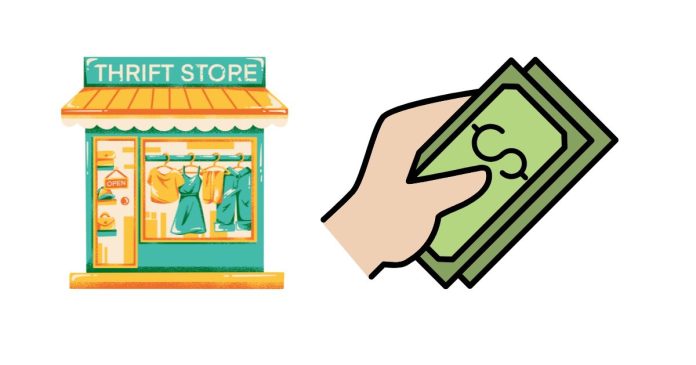Many people turn to thrift stores when they want to declutter their homes or make some extra money by selling gently used items. One common question that often comes up is, “Do thrift stores pay cash for items they buy from customers?” While the process may vary depending on the store, there are some general guidelines and practices that most thrift stores follow. In this blog post, we’ll take a closer look at whether thrift stores pay cash for items, how they determine what they’ll buy, and what you can expect when selling your items.
How Do Thrift Stores Work?
Thrift stores typically operate as a resale business, accepting donated or purchased items from individuals and reselling them to the public at discounted prices. Some thrift stores are non-profit organizations, while others are for-profit businesses. Regardless of the type, most thrift stores rely on the public to provide them with merchandise, and they often have a set process for how they acquire these items.
Do Thrift Stores Pay Cash?
The short answer is: it depends on the thrift store.
There are two main ways thrift stores acquire items: through donations and through purchases from customers. When you donate items, you typically don’t receive any direct payment, though you may be eligible for a tax deduction if the store provides a receipt. However, when it comes to purchasing items from customers, the payment method can vary.
- For-Profit Thrift Stores: These stores are more likely to pay cash for items they buy from customers. They may offer cash for certain types of merchandise, especially if the items are in good condition, are in high demand, or have a resale value. For example, clothing stores might pay cash for designer or brand-name clothes, while furniture stores might pay cash for high-quality or vintage furniture. The amount offered will depend on factors like the item’s condition, demand, and market value.
- Non-Profit Thrift Stores: Many non-profit thrift stores, such as Goodwill or Salvation Army, generally rely on donations rather than direct purchases from customers. They typically don’t offer cash for items but may give you a tax receipt instead. Some non-profits may offer store credit or vouchers in exchange for your items, but cash is rare. This is because non-profits are focused on accepting donations to help fund their charitable missions rather than buying merchandise for resale.
How Do Thrift Stores Decide What to Buy?
When you bring items to a thrift store to sell, the store’s staff will typically evaluate the items based on a few key factors. Here’s what they look for:
- Condition: The better the condition of the item, the more likely the store will pay cash for it. Items that are in near-new or excellent condition are generally more valuable.
- Demand: If the item is something the store knows will sell quickly, such as trendy clothing or vintage furniture, they may be more inclined to buy it.
- Brand or Value: Brand-name items or things with a known value (such as antiques, collectibles, or electronics) are more likely to earn you cash.
- Market Trends: Some items, like seasonal decor or specific trends in fashion, may be in high demand at certain times of the year, leading thrift stores to purchase them from customers.
What Can You Expect When Selling Items to Thrift Stores?
If you’re planning to sell items to a thrift store, here’s what you should expect during the process:
- Assessment: When you arrive at the store, an employee will likely assess the items you wish to sell. They may check the quality, brand, and overall condition of the merchandise before deciding whether they want to purchase it.
- Offer: If the store is interested in buying your items, they will typically make an offer. If the store is for-profit, they may offer you cash or store credit, depending on their policies. For non-profit thrift stores, they may offer you a tax receipt for donation instead.
- Payment: If the store agrees to buy your items and offer cash, they will pay you on the spot. In some cases, the payment may be in the form of store credit if you choose that option.
- Negotiation: Some thrift stores may allow room for negotiation, especially if you have valuable items, so don’t be afraid to discuss the offer with the store staff.
Alternative Ways to Sell Items
If you’re looking to sell your items for cash and your local thrift store doesn’t offer this service, you may want to consider other options:
- Consignment Shops: Some consignment stores offer cash or a percentage of the sale price when your items are sold.
- Online Marketplaces: Websites like eBay, Craigslist, or Facebook Marketplace allow you to sell items directly to buyers and get cash in return.
- Garage Sales: Hosting a garage sale is another way to make quick cash by selling unwanted items locally.
In short, whether a thrift store pays cash for items depends on the store’s policies and whether they are for-profit or non-profit. For-profit thrift stores are more likely to offer cash for items, while non-profits typically rely on donations and may offer store credit or a tax receipt instead. If you’re looking to make some extra cash by selling your items, it’s a good idea to call ahead or check the store’s policy before bringing in your goods. Keep in mind that the condition and demand for your items will play a big role in determining whether or not a thrift store will buy them from you.
Have you ever sold items to a thrift store? What was your experience? Let us know in the comments below!


